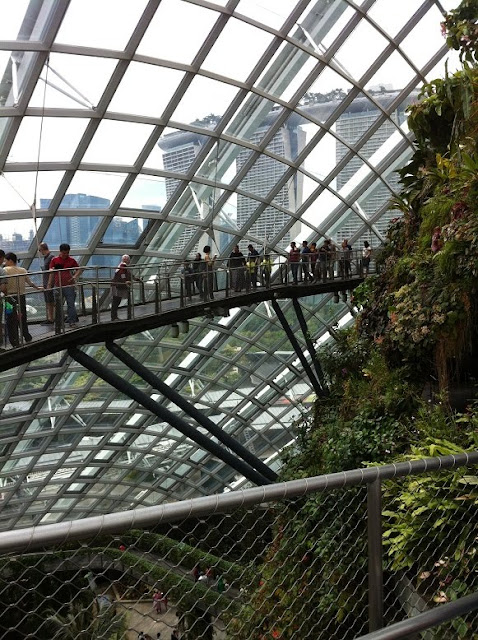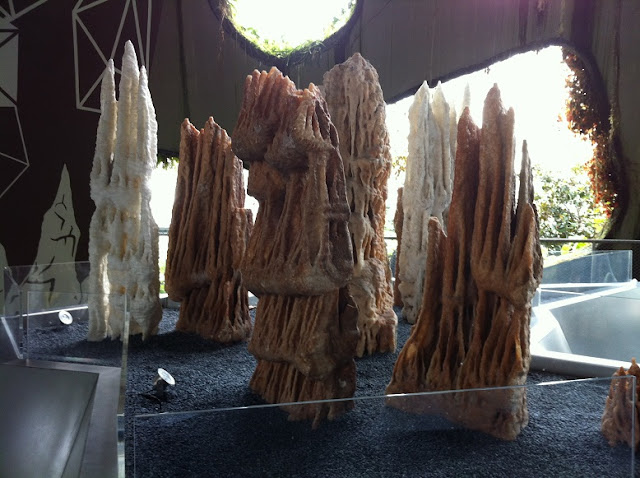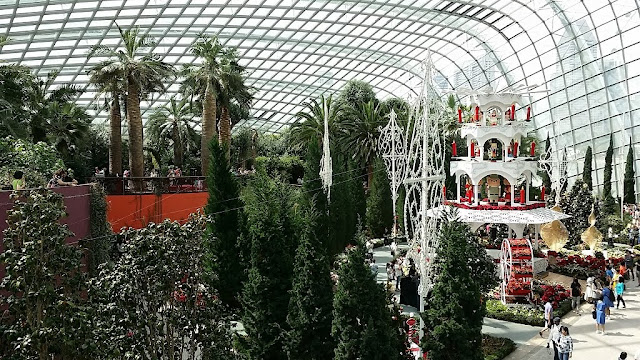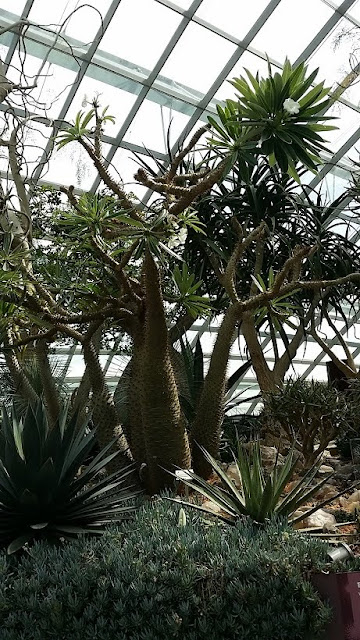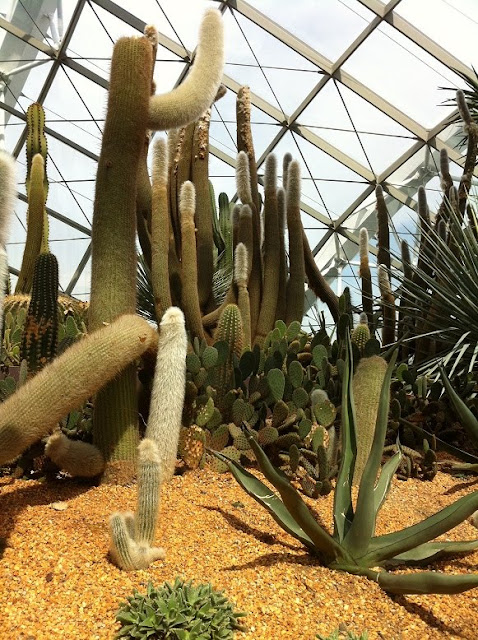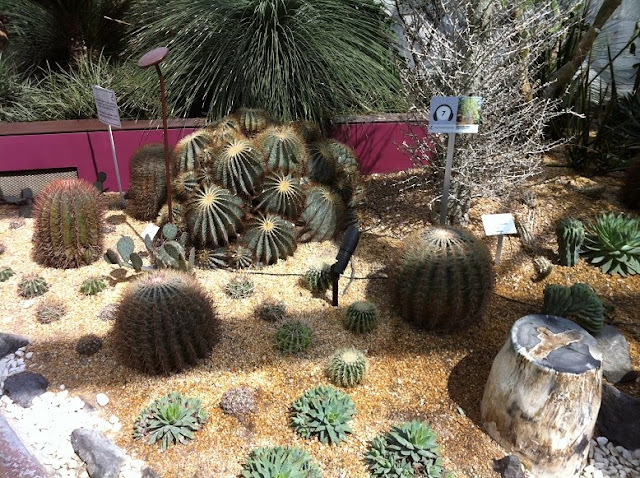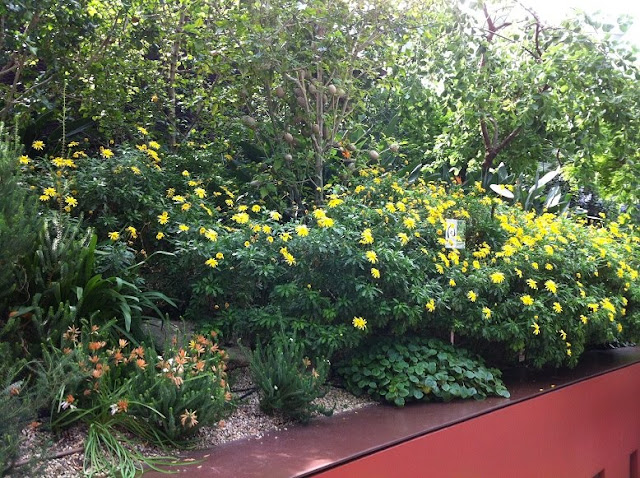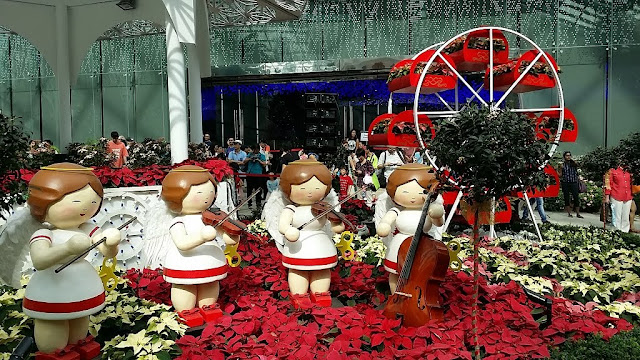My family and I paid a visit to the Gardens by the Bay (Bay South) during the weekend, located adjacent to the Marina Bay waterfront. It is a very popular attraction for both foreign tourists and the locals, which ranked as the No.1 attraction in Singapore by TripAdvisor. The entire park comprises of 3 gardens, Bay South, East and Central, spanning 101 hectares in total. The largest and the most developed of all is the Bay South, while Bay East and Central are still pending future development. The towering Supertree Grove and the 2 cooled conservatories (Cloud Forest and Flower Dome, which are the world's largest columnless greenhouses) are the most iconic landmarks of the Bay South Garden. Other than the mentioned, it also comprises of other themed gardens, such as the Heritage Gardens, Children's Garden and the Dragonfly & Kingfisher Lakes.
We arrived by the MRT Circle Line at the Bayfront Station. We followed the signage towards the Gardens by the Bay. From the MRT exit, we crossed the Dragonfly Bridge, which spans across the Dragonfly Lake. On the bridge, one can immediately see the majestic Supertrees in front us, as well as a good place to view other nearby buildings such as the Marina Bay Sands and the Singapore Flyer. After the bridge, we straight to the first attraction, the Supertree Grove.
 |
| Entering the Gardens by the Bay |
Supertree Grove
The Supertrees are tree-like concrete and steel structures with many plants (over 162,900 in total!) fitted to them. They are equipped with environmental technologies to mimic the ecological functions of tree, such as photovoltaic cells to simulate photosynthesis, collection of rainwater to simulate the tree absorption of water, and the intake/exhaust of air for the conservatories' cooling system to simulate the respiratory function of tree.
There is a total of 18 Supertrees in the Gardens by the Bay. 12 of them are located in the Supertree Grove, while the rest are located near the coach bay and Flower Dome. The height of the Supertrees ranges from 25m to 50m tall, making them very distinct within the park. Standing in between the Supertree Grove certainly makes one feel dwarfed.
One of the Supertree also features a restaurant, IndoChine, at its top.
After spending some time roaming between these gigantic structures, we purchased the tickets to visit the OCBC Skywalk. The skywalk is 128m long, elevated at a height of 22m between 2 of the larger Supertrees. The view on top is awesome, which visitors could enjoy the panoramic view of the garden and the Marina Bay.
Cloud Forest
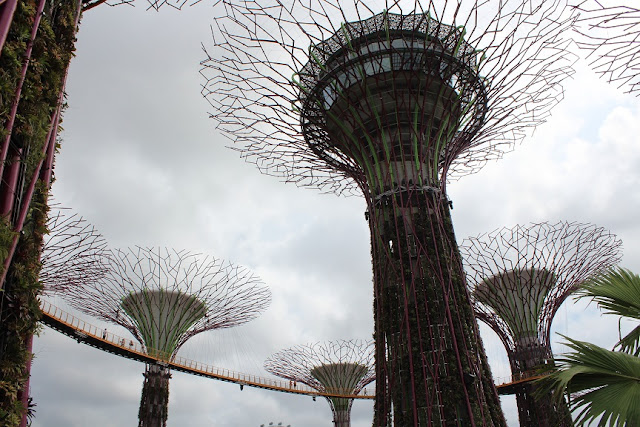 |
| Supertree Grove |
 |
| OCBC Skywalk between the Supertrees |
After spending some time roaming between these gigantic structures, we purchased the tickets to visit the OCBC Skywalk. The skywalk is 128m long, elevated at a height of 22m between 2 of the larger Supertrees. The view on top is awesome, which visitors could enjoy the panoramic view of the garden and the Marina Bay.
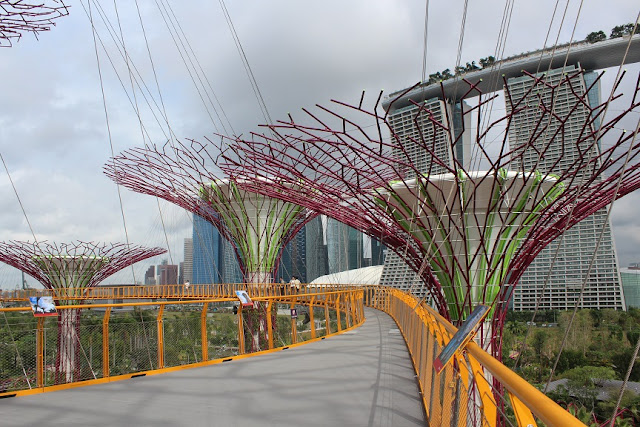 |
| On top of the Skywalk |
 |
| Fantastic view of the Marina Bay |
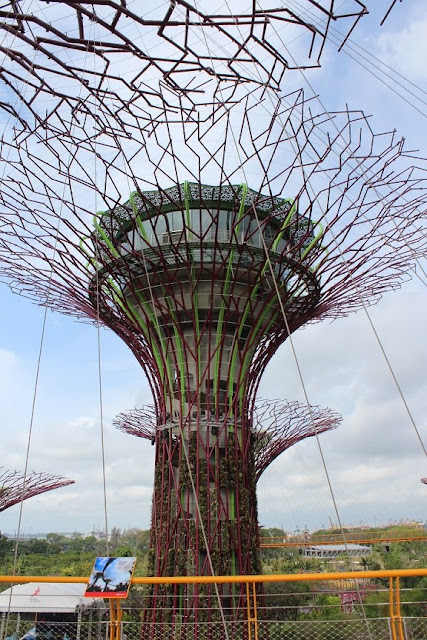 |
| Close-up view of the top of the Supertree |
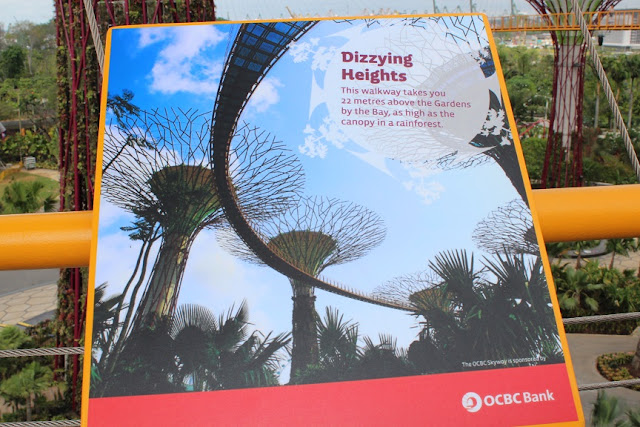 |
| Introduction to the Skywalk |
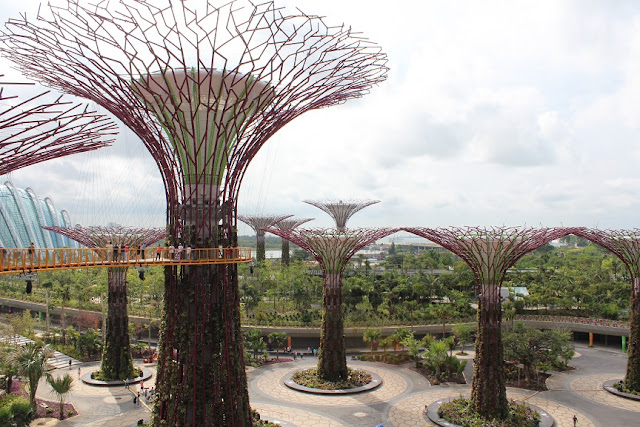 |
| View of the Supertree Grove from the top |
Cloud Forest
We walked towards the 2 cooled conservatories next. Upon arrival of the ticket office, we purchased the double conservatories tickets, which allow entry to both the Cloud Forest and Flower Dome. We visited the Cloud Forest first. As we entered the conservatory, we could immediately feel the cool mist inside and hear the thunderous sound of the waterfall.
What lies in front of us is the magnificent 35m tall "Cloud Mountain", with the waterfall (the world's tallest man-made waterfall) plunging down. The conservatory is maintained at a temperature between 23-25 deg C, meant to replicate the cool environment of tropical highlands between 1000m to 2000m above sea level. The "Cloud Mountain" is fully covered with plants to replicate a lush green mountain.
After taking photos in front of the waterfall, we followed the path around the "Cloud Mountain". Along the way, we could see flower beds beside the pathway, as well as the Cloud Walk and the Treetop Walk above us.
The pathway led us to the elevator area, which we took the elevator to the highest level. The "Cloud Mountain" has many levels, each touch on different themes. The highest level is called the Lost World, which features plants typically found at around 2000m above sea level. Over here, we could also find carnivorous plants, such as the Venus Flytrap and Pitcher Plant. Being the highest point, it is also a good place to enjoy the surrounding Marina Bay scenery.
We proceeded to the next section, Cloud Walk, which is a steel-structural walkway that branches out of the mountain. The walkway is wide and relatively flat, thus it is not a problem even for people with wheelchair or baby strollers to move on it. On top of the walkway, one could have a close-up view of the various epiphytes plant species on the wall of the mountain.
Next, we reached The Cavern, which is to replicate the caves within the mountains. Over here, there's a lot of information about the cloud forests and the various plant species within them. Further down is the Waterfall View, a protruding ledge that allows a close view of the waterfall.
We took the escalator down to the next level, Crystal Mountain. Over here, we could see various shapes of stalagmites and stalactites. These are formed from precipitation of minerals from water dripping through the cave ceiling. Visitors could spend their time reading on the information about the geology of the planet.
At the same level is the Treetop Walk. It is similar to the Cloud Walk, but its lower elevation allows visitors to have a close look at the canopy of the trees.
After the Treetop Walk, we descended to another level called the Earth Check. It is an exhibition about the facts and figures about the Earth, as well as the impact of climate changes on our environment.
The next section is the +5 Degrees, which is a short interactive show that depicts the impact to the planet's climate and ecology when the global temperature rises by 5 deg C. We entered the last section called the Secret Garden, which showcases some of the rare plants. The tour ended at the souvenir shop, where visitors could find many horticultural related souvenirs.
Flower Dome
 |
| "Cloud Mountain" and the Waterfall |
After taking photos in front of the waterfall, we followed the path around the "Cloud Mountain". Along the way, we could see flower beds beside the pathway, as well as the Cloud Walk and the Treetop Walk above us.
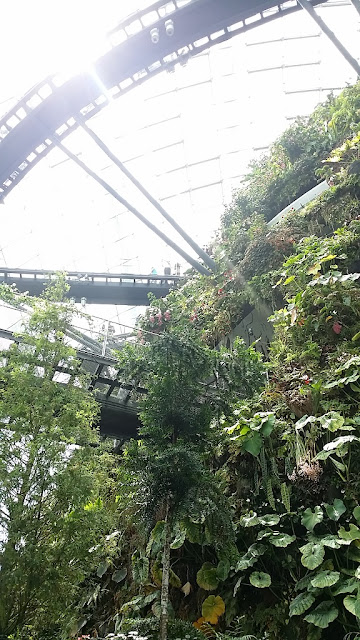 |
| The Cloud Walk and Treetop Walk above us |
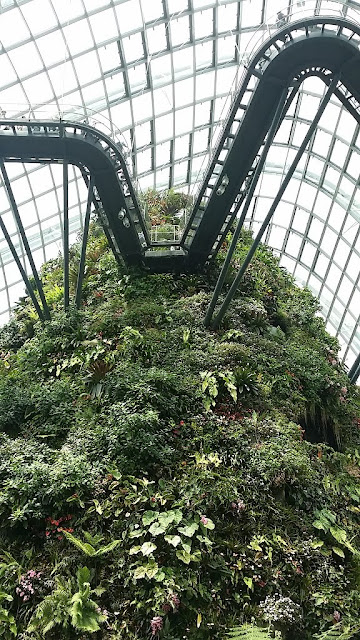 |
| The Cloud Walk at the top |
 |
| Flower bed by the side |
 |
| Another view of the Cloud Walk |
 |
| The Lost World. Marina Bay Sands can be clearly seen from here. |
 |
| Pitcher Plant and Venus Flytrap |
 |
| The Cloud Walk around the mountain |
Next, we reached The Cavern, which is to replicate the caves within the mountains. Over here, there's a lot of information about the cloud forests and the various plant species within them. Further down is the Waterfall View, a protruding ledge that allows a close view of the waterfall.
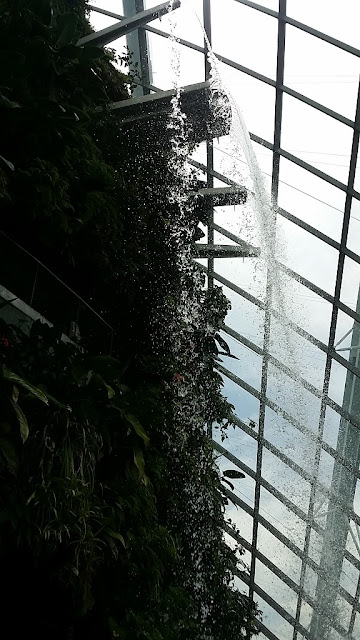 |
| Close up view of the waterfall |
We took the escalator down to the next level, Crystal Mountain. Over here, we could see various shapes of stalagmites and stalactites. These are formed from precipitation of minerals from water dripping through the cave ceiling. Visitors could spend their time reading on the information about the geology of the planet.
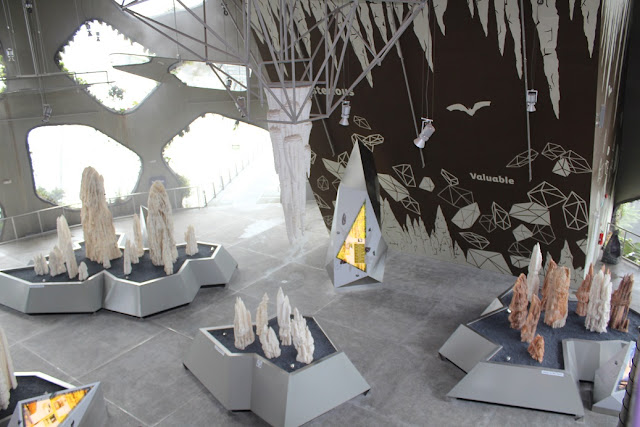 |
| Crystal Mountain |
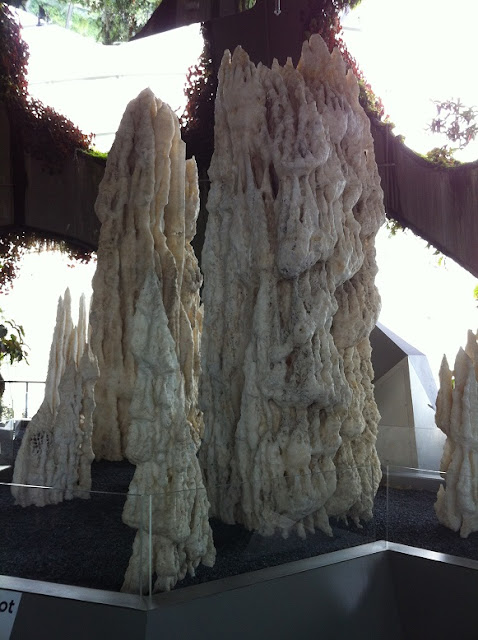 |
| Stalagmites |
At the same level is the Treetop Walk. It is similar to the Cloud Walk, but its lower elevation allows visitors to have a close look at the canopy of the trees.
 |
| View of the Treetop Walk from the Cloud Mountain |
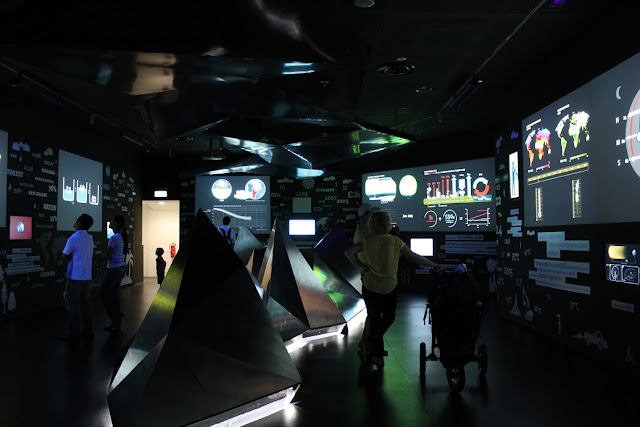 |
| Inside the Earth Check |
Flower Dome
After the Cloud Forest, we visited the Flower Dome. Like the Cloud Forest, the Flower Dome is maintained at 23-25 deg C. It exhibits plants and flowers from the Mediterranean and semi-arid subtropical regions.
 |
| Flower Dome |
 |
| Christmas decorations near the entrance |
We visited The Baobabs first on the right of the entrance, which showcases odd-looking trees from the African region.
Baobabs are also commonly known as Bottle Tree or Upside-down Tree, distinct for their thick and fat trunk, which can store a lot of water, an important feature to survive the arid environment in Africa. Out of all the Baobabs here, the African Baobab stands out, being the largest tree in the Flower Dome and weighs more than 32 tons.
Next to The Baobabs is the Succulent Garden, which displays various types of desert plants, such as Cactus and Aloe Vera.
We headed towards the entrance to tour the other side of the dome, which features the Australian, South American and South African gardens.
As it has been a long day walking, we rested for a while near the Pollen restaurant and Olive Grove. At the Olive Grove, we just realised that there's a 1000 years old Olive Tree over here!
After the rest, we proceeded to the last section of the dome, the Flower Field.
The Flower Field changes its display every 1-2 months, featuring flowers of different themes or seasons. As it was near to Christmas period, the entire Flower Field had transformed into a Christmas celebration.
Just by the side of the Flower Field is the Flower Field Hall, which is an event hall that could be booked to hold corporate or wedding events.
It had been a long day and we decided to call it a day after the Flower Dome tour. In fact, we had yet to explore the other parts of this huge park, which we would certainly come back again in the future.
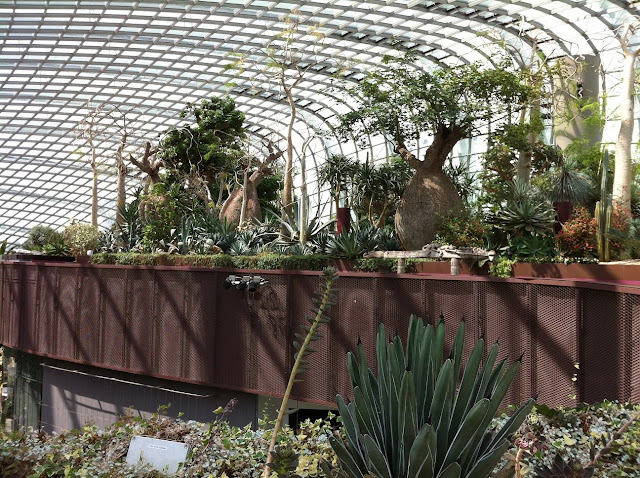 |
| Overlooking The Baobabs section |
 |
| The Baobabs |
 |
| Overlooking the Flower Field from The Baobabs |
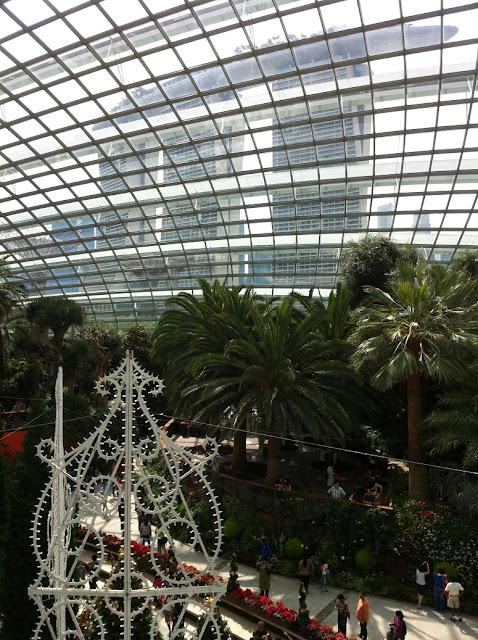 |
| View of Marina Bay Sands from inside the Flower Dome |
Next to The Baobabs is the Succulent Garden, which displays various types of desert plants, such as Cactus and Aloe Vera.
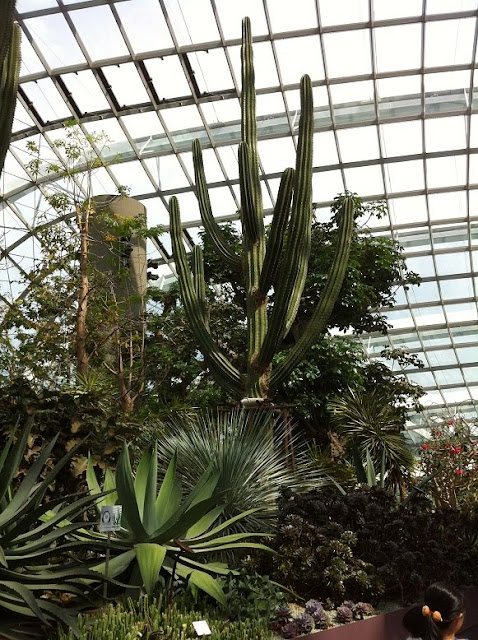 |
| Succulent Garden |
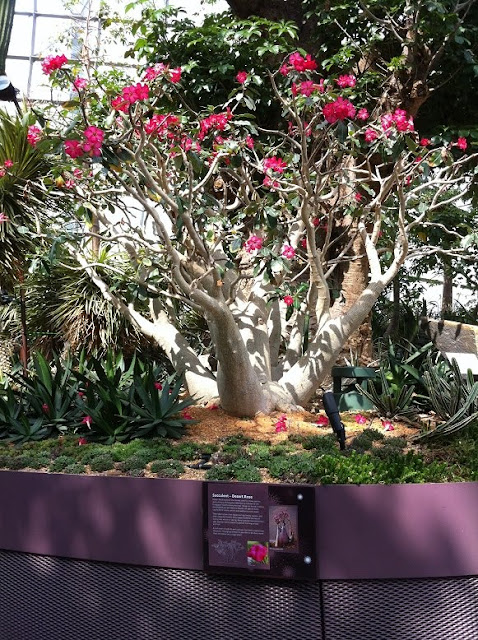 |
| Desert Rose |
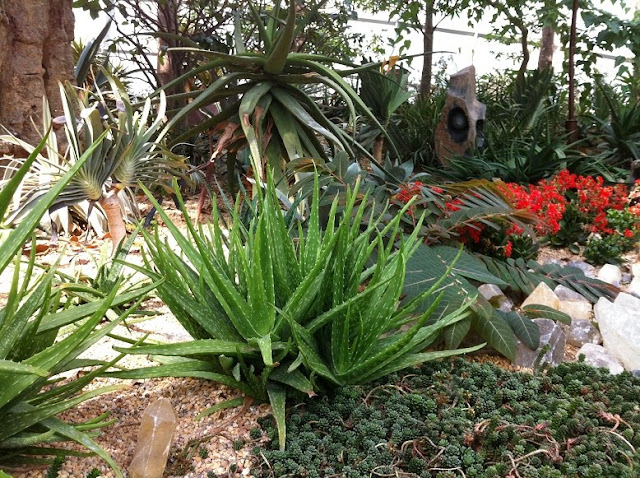 |
| Aloe Vera |
 |
| Cactus Plants |
We headed towards the entrance to tour the other side of the dome, which features the Australian, South American and South African gardens.
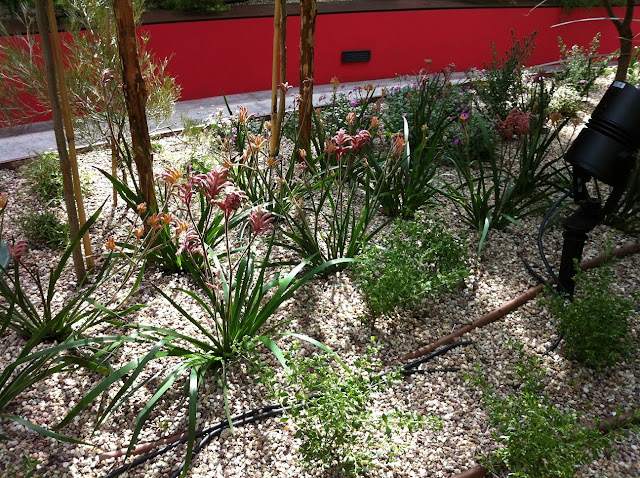 |
| Kangaroo's Paw |
 |
| Tasmanian Devil mascot |
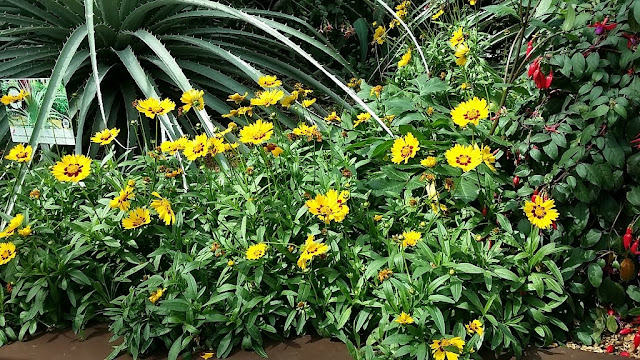 |
| Chilean Puya and flowers from South American region |
 |
| Flowers in the South American Garden |
 |
| Flowers from South African Garden |
As it has been a long day walking, we rested for a while near the Pollen restaurant and Olive Grove. At the Olive Grove, we just realised that there's a 1000 years old Olive Tree over here!
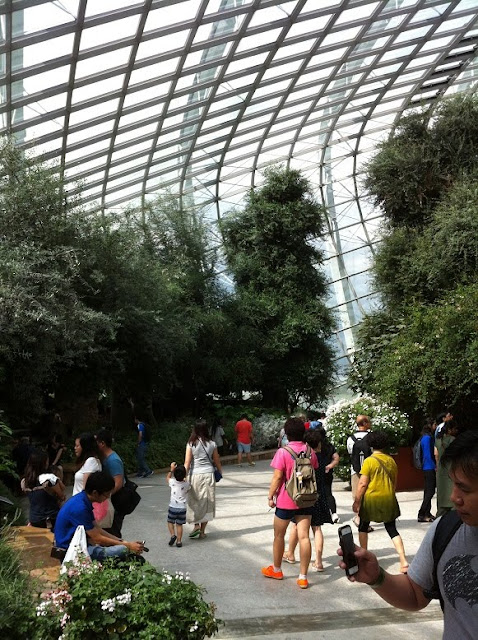 |
| Rest area at the Olive Grove |
 |
| View of Mediterranean (right) and South American (left) Garden en-route to the Flower Field |
 |
| Entering the Flower Field |
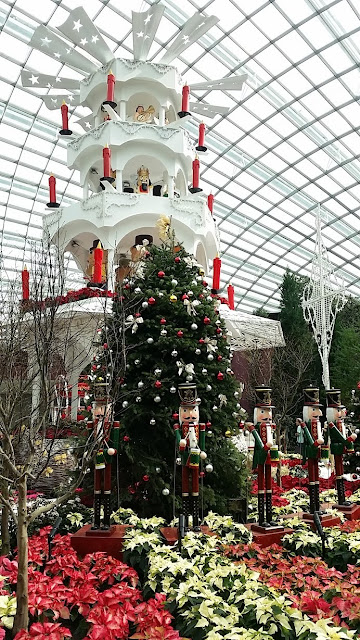 |
| Christmas theme decorations at the Flower Field |
Just by the side of the Flower Field is the Flower Field Hall, which is an event hall that could be booked to hold corporate or wedding events.
It had been a long day and we decided to call it a day after the Flower Dome tour. In fact, we had yet to explore the other parts of this huge park, which we would certainly come back again in the future.

